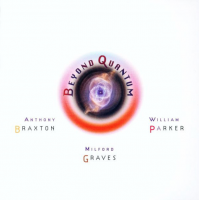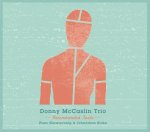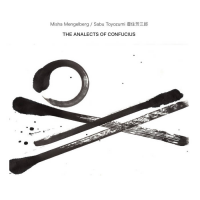Home » Jazz Articles » Multiple Reviews » Helen Merrill: The Helen Merrill-Dick Katz Sessions and Casa Forte
Helen Merrill: The Helen Merrill-Dick Katz Sessions and Casa Forte
Taken as individual performances, each of these interpretations is capable of repaying the listener far in excess of its deceptively minimalist exterior.
At once the most sympathetic and tragic of the major Romantic poets, John Keats, who died at the same age as trumpeter Clifford Brown (25), decried the cult of personality, looking to Shakespeare for the single quality distinguishing the major from the minor artist. The supreme creator, Keats concluded after consideration of the Bard's plays, is the one who possesses "negative capability." Elaborating only sparingly on his oxymoronic, paradoxical phrase, he explained that an insistence on black and white certainty, reassuringly positive outcomes, and stable meanings or absolute truths is antithetical to the quest for beauty.
Helen Merrill's singular focus on the song and the art of jazz singing, while not winning her throngs of listeners, has certainly attracted the ones who count—for starters, musicians such as trumpeter Clifford Brown (Helen Merrill with Clifford Brown, Emarcy, 1954), arrangers Gil Evans (Dream of You, Emarcy, 1956) and Quincy Jones, pianist Bill Evans, trumpeter Miles Davis, and pianist Marian McPartland. In his informative and insightful notes written for this 2008 edition of Casa Forte, the second disc reviewed here, Joe Sullivan insists that what "truly sets Merrill apart" and secures her a place in the pantheon of the greatest jazz singers is her ability to go "straight to the heart of the lyric," revealing herself "so intimately and completely" that she must be counted among the most "courageous of jazz singers."
Anyone who listens to the music on either of these discs, from sessions recorded fifteen years apart, should have no difficulty agreeing with Sullivan's statement about Helen Merrill's ability to penetrate a song's essence lyrically and musically, in effect making it her own. But the element of "courage" could as easily be seen in her willingness to trust her material and her listener's discernment as much as the laying bare of the performer's "innermost personal thoughts and passions." Helen Merrill
Helen Merrill
The Helen Merrill-Dick Katz Sessions
Mosaic Records
2008
Listening to a Billie Holiday or a Frank Sinatra is undeniably to experience the art of the Romantic, or to enter a dimension that goes beyond the song and into the performer's personal biography and psyche. With Helen Merrill, on the other hand, the song of itself seems sufficient, its melodic and verbal narrative providing as much feeling and excitement as an attentive listener may feel capable of handling.
As a quick test of the foregoing distinction one might listen to "You're My Thrill," the first track of The Helen Merrill-Dick Katz Sessions, and compare it to Peggy Lee's performance of the same tune from her admired Black Coffee session (Decca/Verve, 1956), which employs a similar arrangement and instrumentation. Immediately apparent is the breathy elocution of both singers, the warm and slightly diffused vocal timbre, the crystalline yet effortless diction—similarities so striking that some listeners no doubt will attribute the only differences to the contrasting trumpet styles of Conte Candoli and Thad Jones or the piano voicings of Jimmy Rowles vs. Dick Katz.
Yet there's a fundamental difference in the approach of each singer to the construction of the performance. With Peggy Lee the song refuses to be separated from the persona of a sultry and sexy, seductive and potentially dangerous siren; regardless of how one responds to the haunting, hypnotic refrains of the latter singer's "You're My Thrill," with its unresolved minor and half-diminished chords and its insistent use of a second-person grammatical subject, a listener can't help but be equally impressed (if subliminally) by Norma Deloris Egstrom's construction of the alluring and glamorous, complex and mysterious yet strangely powerful if not indomitable persona of Peggy Lee. Compared to the performance by the highly-publicized, much-photographed Lee, the reading of the song by Helen Merrill feels like a sea change, a shifting of the balance entirely in favor of the song, bringing it into sharper focus than ever before.
The focus on the art object itself, along with its revitalization in the present moment, is the explicit game plan of the co-leaders on The Helen Merrill-Dick Katz Sessions. As the pianist- arranger wrote in the original liner notes: "Unlike the super-professional who seldom varies from one performance to the next and who always dominates the scene, Helen's artistic sensibilities and keen ear make her more dependent than most on the collaboration of creative, flexible musicians. She has a strong need to act and react to the 'now' of the music, and performs with the spirit of the true improviser." To this shared commitment to innovation Merrill and Katz added the requirement that "the singer be just one of several soloists...with the other musicians participating as artistic equals rather than as background 'accompanists.'"
The result is a rich and varied musical feast to all but the most impatient listener. During two recording sessions, the first in 1965 and the second in 1968, Katz and Merrill managed to produce 19 tracks—ranging from "My Funny Valentine" at just over two minutes to "Spring Can Really Hang You Up the Most" at just under seven minutes—on which the only constant is the sound of surprise. Although the performances undeniably "favor" the female vocalist, a song is just as likely to leave a memorable impression for the piano work of Katz or the trumpet artistry of Thad Jones or the sensitive contributions of guitarist Jim Hall or the foregrounded bass of Ron Carter.
The program, with the exception of a comparative rarity like Alec Wilder's "The Winter Of My Discontent" or a jazz standard like Ornette Coleman's "Lonely Woman," is one that initially may seem overly familiar to listeners steeped in the Great American Songbook—but upon deeper reflection, it's that attention to tradition and convention (think of Shakespeare's revolutionary employment of the two-century- old sonnet form) that makes it possible for all musicians on the date to realize their fullest creative potential, individually and collectively.
It's doubtful Duke Ellington's "It Don't Mean A Thing If It Ain't Got That Swing" has ever received a treatment so abstracted and minimalist yet brimming with unexpected turns in instrumental textures and exchanges. Hoagy Carmichael's "Baltimore Oriole" features an animated and acerbic musical argument between trumpet and guitar improvising simultaneously (the oriole and the two-timing jaybird) even as the vocal narrative remains calm and unruffled, introducing an extended unaccompanied bass solo, then reentering, without bass and in a new key, to complete the sad tale of the protagonist/oriole's ill-conceived circular journey from Baltimore and back.
Cole Porter's "What Is This Thing Called Love," practically a harmonic etude in the hands of all the beboppers, receives yet another renovation, making the tune an experimental exercise not just in minor- major modalities but in contrapuntal vs. harmonized textures as well as individual vs. collaborative improvising. Especially ambitious and complex is Katz's striking setting for Ellington and Billy Strayhorn's "Day Dream," which first establishes a wistful, meditative mood through Merrill's deliberative, breathy, practically tempo-less reading of the lyric, then shatters the spell with fortissimo sonic lightning bolts supplied by trumpet and guitar in a brief double-time section, before Carter's naked bass does an out-of-time walk into a snuggly-pocketed, mid-tempo swing, establishing the perfect pace for a scintillating Thad Jones trumpet solo.
 Helen Merrill
Helen Merrill
Casa Forte
Mosaic Records
2008
Casa Forte, is a somewhat larger production, recorded over a 3-day period in the spring of 1980. The ample cast—ranging from veterans guitarist Bucky Pizzarelli, bassist George Mraz, drummer Grady Tate, tenor saxophonist Sal Nistico and trombonist Urbie Green to strings, brass and harp—immediately brings to mind a lush, epic-scale backdrop of the sort Gordon Jenkins might supply for Sinatra. But Merrill's vocal timbre and minimalist aesthetic along with the sympathetic arranging of Torrie Zito yield a result no less intimate and sensitive than the Merrill-Katz meetings.
With the exception of the Richard Whiting-Johnny Mercer chestnut "Too Marvelous For Words," the emphasis this time out is on more recent additions to the American Songbook, including "contemporary classics" by Antonio Carlos Jobim along with winsome songs by Sergio Mendes, Johnny Mandel, Milton Nascimento, Edu Lobo and Michael Franks. Besides the familiar instrumentation, Zito mixes in the exotic sounds of steel guitar, harp, triangle and bells as a piquant complement to Merrill's dulcet and airy, "dreamy" vocal quality— as unforced and "natural" as gauzy cumulus gathering overhead on a lazy summer afternoon. Yet the arranger recognizes that within the dynamic scale established by a vocalist of such exquisite, poetic sensibilities there are also roots, fiber, soul. No fragile grass hut but a resilient construction, Merrill's "Casa Forte" opens the door to the bracing sounds of trombone, French horn and a rhythm section capable of digging deep, unshakable grooves.
These are hard times for the Songbook and its resplendent texts, especially the ballad. Several of Sinatra's more poignant Capitol concept albums are currently out of print and have become scarce, while some of the recordings inspired by Shirley Horn and Johnny Mandel's landmark Here's To Life (Verve, 1991) have apparently been poorly understood and indifferently received by the public. All the more reason to applaud Mosaic's decision to release these comparatively neglected Merrill recordings which, like all art worthy of the designation, are incapable of becoming dated. Still, the listener might best be cautioned against playing all of the tracks at once, thus risking their reduction to background ambience- -perhaps all too common an occurrence with music as subtle yet pleasant, concentrated yet unobtrusive as this. Taken as individual performances, each of these interpretations is capable of repaying the listener far in excess of its deceptively minimalist exterior.
Returning to the two apparently opposing views of art—is the music on these discs a form of self- expression? Or, following Keats' ideal of a depersonalized art, is it a release from the self's emotional baggage? Should we ascribe the deceptive power of these performances to the emotional life of the performer or to the life of the emotions that these performances set into play? Or might we simply acknowledge that the music of Helen Merrill has the power to move us deeply—and in no uncertain way?
Tracks and Personnel
The Helen Merrill-Dick Katz Sessions
Tracks: You're My Thrill; It Don't Mean A Thing; Here's That Rainy Day; Baltimore Oriole; Don't Explain; What Is This Thing Called Love?; The Winter Of My Discontent; Day Dream; Deep In A Dream; I Want A Little Boy; I Should Care; Never Will I Marry; Where Do you Go?; Lonely Woman; While We're Young; A Lady Must Live; Spring Can Really Hang You Up the Most; Lover Come Back To Me; My Funny Valentine.
Personnel: Thad Jones: cornet (1-18); Jim Hall: guitar (1-18); Dick Katz: piano (1-18); Ron Carter: bass (1- 13, 15-19); Pete LaRocca: drums (2. 5, 6, 8); Arnie Wise: drums (4,7); Hubert Laws: flute (10-18); Elvin Jones: drums (10-18); Gary Bartz: alto saxophone (14); Richard Davis: bass (14).
Casa Forte
Tracks: Natural Sounds; Antonio's Song; Vera Cruz; Wave; So Many Stars; Like A Lover; Too Marvelous For Words; How Insensitive; Casa Forte; Close Enough for Love.
Personnel: Bucky Pizzarelli: guitar (1, 3, 5-8); George Mraz: bass (1-2, 5, 6, 8,10); Grady Tate: drums (1, 5, 6, 8); Rubecus Bassini: percussion (1, 5, 6, 8); David Nathieu, Lewis Eley, Barry Finclair, Jerry Tarack, Marvin Morgenstern, Jan Mullen, Charles Libonve, violins (1, 5, 6, 8); Judy Giest, Lamar Alsop: violas (1, 5, 6, 8); Charles McCracken: cello (1, 5, 6, 8); Gloria Agostini: harp (1, 5, 6, 8); Sal Nistico: tenor saxophone (3, 7-8); Urbie Green: trombone (3, 7-8); Jim Buffington, Peter Gordon, John Clark: French horns (3, 7-8); Torrie Zito: piano (2-4, 7-8, 10); Francisco Centeno: electric bass (3, 7- 8); Dom Um Romao: drums and percussion (3, 7-8); Steve Kroon: percussion (3, 7-8); Ronnie Zito: drums (2, 10).
Tags
PREVIOUS / NEXT
Support All About Jazz
 All About Jazz has been a pillar of jazz since 1995, championing it as an art form and, more importantly, supporting the musicians who make it. Our enduring commitment has made "AAJ" one of the most culturally important websites of its kind, read by hundreds of thousands of fans, musicians and industry figures every month.
All About Jazz has been a pillar of jazz since 1995, championing it as an art form and, more importantly, supporting the musicians who make it. Our enduring commitment has made "AAJ" one of the most culturally important websites of its kind, read by hundreds of thousands of fans, musicians and industry figures every month.


















